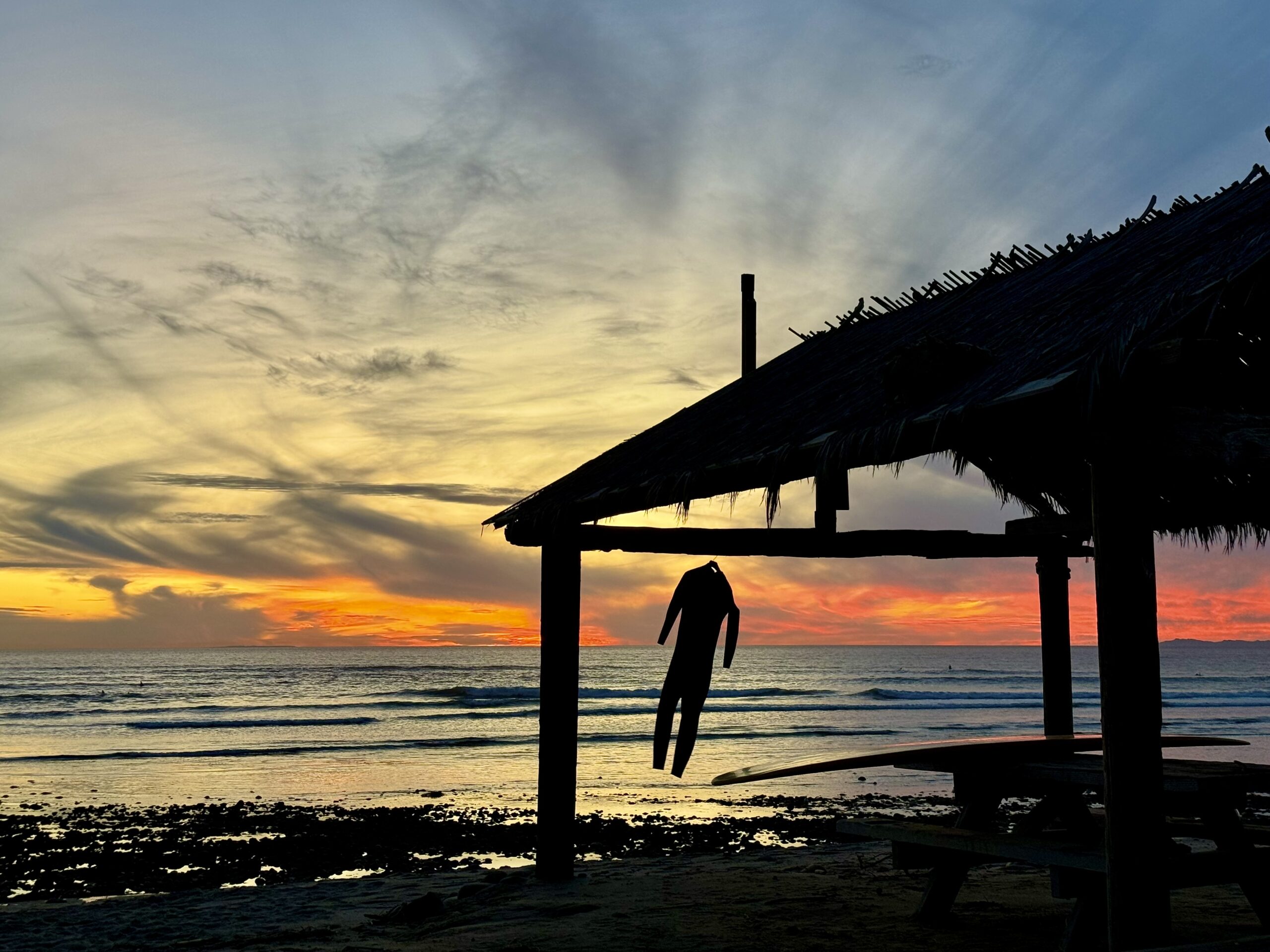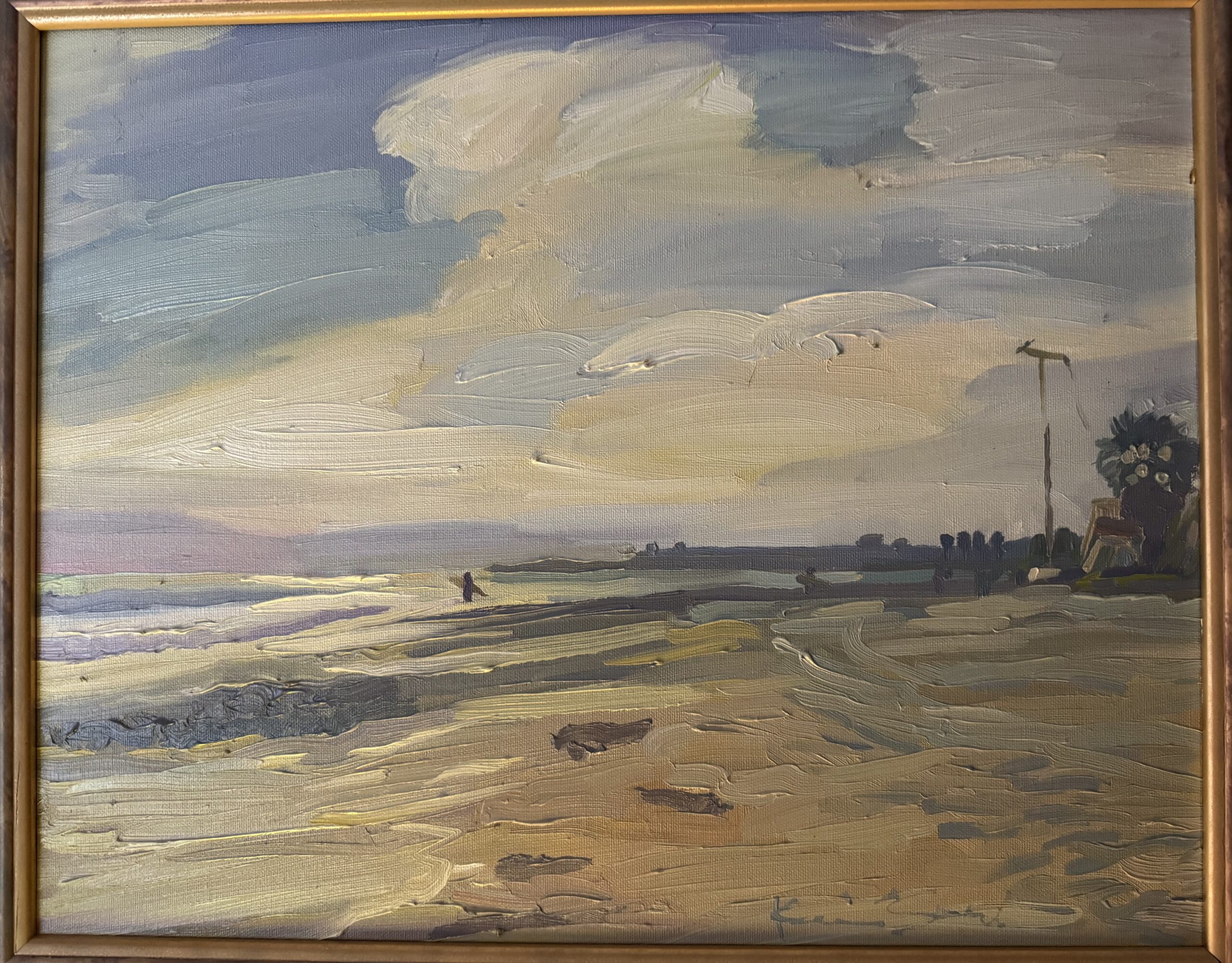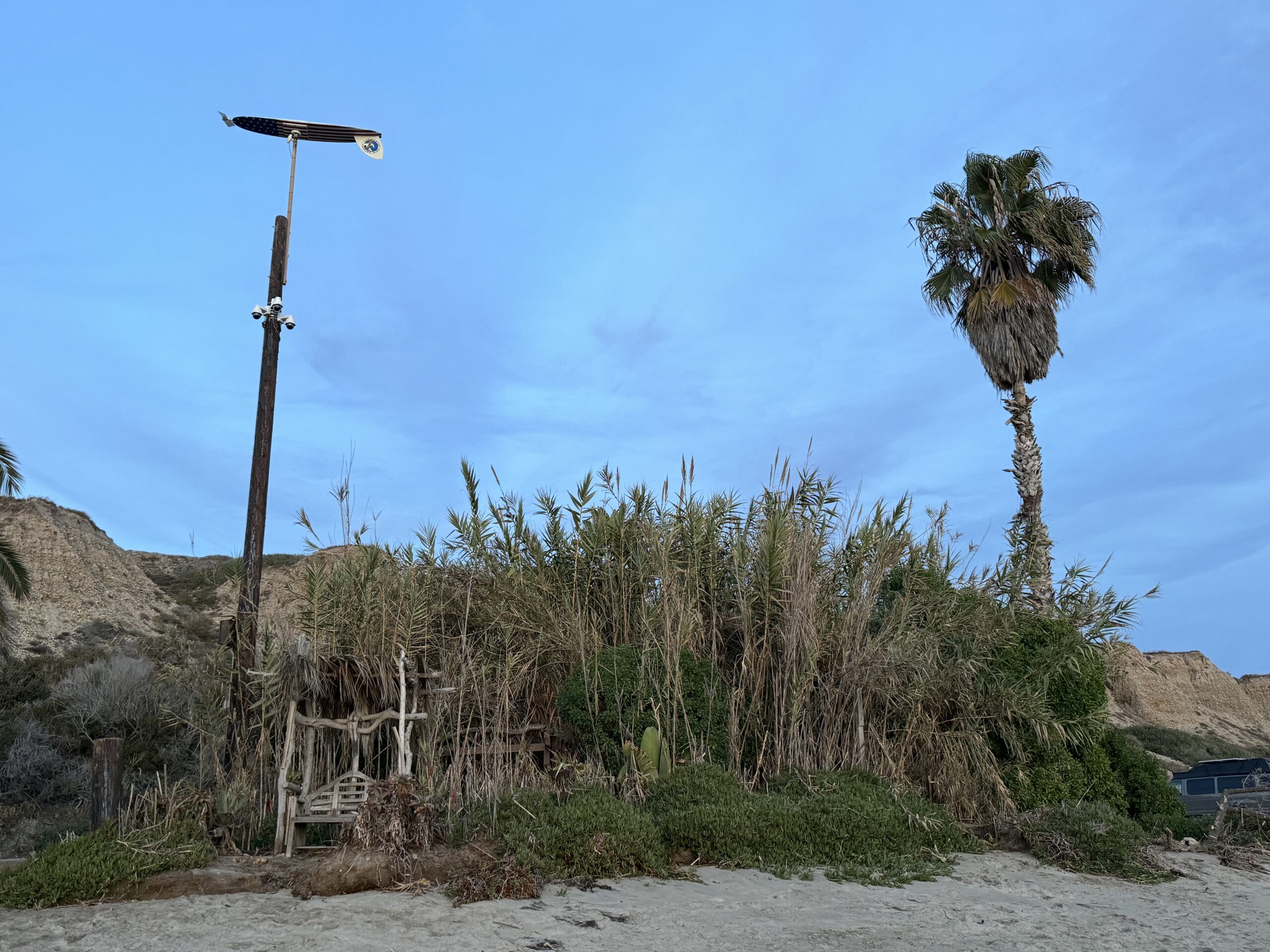Requiem for a Beach
- Posted in: Blog
- Tags Beach, Conservation, Requiem for a Beach, san onofre, surf, surf spot, surfing community, surflife, Words by Mike Evans

Words and photos by Mike Evans
Four generations, maybe even five for the most prolific. That’s the family effect of losing San Onofre, one of California’s most iconic surfing beaches. The ocean we celebrated every day in every way has moved closer to the bluff, taking out the dirt road where the old men played bocce. The lineup of classic cars, trucks, panel vans, travel vans, campers, woodies, even converted passenger buses, longboards, folding tables, dogs of every sort, kids of every age, (both dogs and kids running absolutely wild), ladies playing bridge, old men talking story, picnics laid out, beach fires smoldering, towels waving in the breeze, girls and boys flirting, moms and dads keeping an eye, guitars and ukuleles on the ready – is now a scene preserved only on paintings and photographs. And it is stamped solid in the memories of at least four generations. The beach is closed. The freeloader seagulls must be missing us already.
This stretch of coastline is unique in our state and in all the world. The round-rock-cobble-reef, formed by enormous long-ago flows from two creeks: the San Onofre and San Mateo, make for rolling surf where keikis and groms learn to surf, and experienced surfers toy with waves that are perfect for simply being toyed with. When it was big, the grown-ups would ask us, “Did you make it out to first break today?” That was a mark of arrival, an initiation into the world of strong swimmers and expert wave riders.
We had no leashes. We were surfing Old Man’s. A long board after a wipeout, upside down and sideways, would always wash all the way to the shore. Sometimes a dad or big brother with a big heart would put you on his board and you both could ride prone, straight-off-adolph, into shallow water, saving you a very long swim. But you still had to stumble on foot over the last stretch of reef, get your board, and make that long trip back out. Most times though, absent a compassionate grown-up, you just had to make the long swim, alone, get your board and start over.
With your sights on first break again, or if too worn out for the big surf outside, you might have settled for third or second break to continue your learning experience. San Onofre’s wave reforms two, three, even four times on big swells, but the goal as a kid was to make it out to, and catch, and ride, and not wipeout on, the big outsiders at first break. Extra points if any grown ups witnessed it.
We would surf until our arms felt like noodles; a lot of paddling. Afternoon naps on the beach would guarantee a righteous sunburn. But oh! the melody of those constant rolling waves, no sweeter a lullabye to be imagined. Wake up in time for the proverbial, and sometimes actual “evening glass off.” Another go-out before dinner and dark.

No wonder we continually thanked our moms and dads (much later, for at the time we took them for granted), and we stayed connected years later when we got our own cars, trucks, vans, or campers. We got married and started taking our kids, and they grew up and stayed on. They took their kids, who now bring their babies. Or at least they did until a couple days ago. True, we all fell in love with the beach, but mostly it was the lifestyle that got into us. Can we ever get it back?
Before time immemorial, the first peoples were walking out at low tide or shallow water, bringing in arm’s length lobsters and abalones the size of their faces. In 1769, the first baptism in California materialized at the hands of the Serra expedition, just around the bend and a few miles upstream, where the San Mateo is joined by Cristianitos Creek. If you fast forward around a hundred years, our beach was part of a huge land grant owned by California’s last Mexican governor, Pio Pico y su Rancho Santa Margarita y Las Flores o La Paz. He built his classic adobe several miles away on the banks of the Rio Santa Margarita. It’s still there, on Camp Pendleton.
Pico lost it to Forster. Mexico lost it to the United States. Forster lost it to Flood who brought O’Neill in as a partner. O’Neill got the whole place and almost lost it to Al Capone who had been eyeballing those remote beaches as prime territory for his rum-running from Mexico. Baumgartner (a branch on the O’Neill family tree) got half the ranch, basically all the seashore land, and promptly lost it to the Navy who had been eyeballing those remote beaches as prime territory for World War II training. The Navy gave it over to the Marines who they own anyhow. All the while, the lullabye surf kept a-rollin’ in.
Oh, to have been here a mere 100 years ago! Rancho Santa Margarita, a working cattle ranch with heavy financial concerns, could afford only so many vaqueros on its 200,000 acre spread. The beaches were a sort of a no-man’s land. There was a road between L.A. and San Diego. Bootleggers, though not organized through Chicago were common, and you also had smugglers of stuff we’ll never be sure of, fishermen and squatters, and an interesting band of new visionaries called “surfers” or wave riders. These guys had returned on ocean liners from vacations in Waikiki and were dreaming of a Hawaiian lifestyle here at home, California dreaming. Several beaches were to their liking: Rincon, Malibu, Palos Verdes, Corona del Mar, and Windansea, but this wild place along the south coast and lonely, accessible only to trespassers and outlaws, was their favorite. San Onofre. And the ranch pretty much turned a blind eye, because the smugglers were heavily armed with tommy guns, the squatters were mostly harmless, and the fishermen and surfers were almost invisible. Our beloved dirt road was seeing its share of action.
In the 1930’s the ranch granted limited access to beach goers through a tenant who ran a fishing camp, and charged 25 cents admission, fisherman or surfer, it didn’t matter. Surfers started to outnumber the fishermen and a camaraderie was forming. Who knows? Maybe a few fishermen tried their hand at surfing. For sure surfers were also fishing, because everyone has to eat. A San Onofre fish/surf camp! Sign me up!
In the beach scene up and down the coast, surfers just blended in, lugging their big redwood boards, and at times shaping them from planks right on the sand, cooking, camping, fishing and riding the foamers in classic Hawaiian style. Bound for San Onofre, they would bring their best board in their best car, with their best gal, a little food and drink, guitar and uke; they would practice their songs, dance the hula, make driftwood beach fires, and live completely carefree, replicating the island lifestyle with a taste of California. They were creating the life they eventually passed down to us, and they made their beach time a regular, year ‘round top priority.
I’m not sure how the pioneers kept access through the great war, but I imagine some surfers were Marines, a few even officers, and some may have had connections, but most just kept trespassing. This is the group who in the early 1950’s, founded the San Onofre Surfing Club, which was born out of a sweetheart deal between a Marine general and some real honest surfers. They were allowed to drive down to the beach on the road that is presently washing away, but no more camping.
For around forty years they kept a good thing going, treating the beach with great respect, but ironically, they almost lost it to erosion in the wet winter of 1969. One of the club’s founders was a civil engineer called Art Beard, a well respected man who became sort of a dad to me when a few years prior I was “adopted” into his amazing family. It’s a long story, but hey, what’s one more PB&J when you’ve already got eight kids? Lieutenant Commander A.C. Beard (retired) worked with the Surfing Club and the Marines to restore the road. They were able to save everything they had built, the palapas, volleyball court, the weather vane, outhouses, changing rooms, picnic benches and even the famous “Bamboo Room” where the sounds of live Hawaiian music could be heard every Saturday night in summer. Can something like that be done today? Is there even a fix on this one? It’s not just rain, it’s the whole ocean.
The Surfing Club lost it to the State Park system in the 70’s (exclusive access, that is), when Nixon got the Western White House at Cotton’s Point. That’s when we also lost a beautiful box canyon south of Dogpatch, where Edison started building a nuke plant. Big changes were happening fast. At the time, and to their credit, State Parks allowed the Surfing Club’s “amenities” to remain, and improved the bathrooms. The club stayed viable to proudly maintain their heritage lifestyle and support the Park.
But access was now to be shared across the board and everyone, even club members, had to pay the day use entry fee. Interestingly, this also allowed a new crew of beach folks to steadily become San-O faithfuls. You don’t have to be an old timer or multigenerational to love this place. Lots of dedicated souls who have more recently discovered the San Onofre lifestyle are in mourning at today’s loss.
Matters might be complicated by the fact that the park system does not own the land. The 50-year lease between State Parks and the Department of the Navy expired three years ago and they agreed on an extension to allow both parties to work out some details, revise a few maps, and negotiate a new lease. Hopefully, issues around “ownership” and “stewardship” of our venerated road will not be too hard to work out as they get into the specifics of the agreement.
Fact: we have been noticeably losing our sandy stretches of beach along the entire southern California coast for several years now, and have been wondering where this seawater “intrusion” might end. Turns out for San Onofre, it finishes at the toe of the slope, the bluff which forms the firm foundation for an ancient marine terrace extending clear to Oceanside.
We lost the beach, or at least access to it on February 1, 2024. The ocean claimed the dirt road and many of our iconic enhancements from years past and high tide now laps a lot higher. Under the shallow water though, where the sand was once dry and squeaky clean, the “beach” is actually still out there, mostly visible at low tide.
Perhaps we should change the title to Requiem for a Lifestyle.
Mike Evans
February 4, 2024

